Trump's promises to 'drill, baby, drill' and kick out migrants are at odds. Here's why.
LEA COUNTY, N.M. – This sliver of southeastern New Mexico dotted with pumpjacks and gas wells helped catapult the U.S. to energy independence five years ago. Immigrant workers, including those here illegally, helped make it happen.
That has made for an uncomfortable reality here in this proudly conservative county, where immigration has fueled growth but the politics are deep red and nearly 80% of voters favored Donald Trump in the last election.
Now, Trump's twin vows to "drill, baby, drill" and deport unauthorized immigrants are on a collision course in Lea County.
Here, fake work papers can be bought for $250 and oil companies employ workers – knowingly or not – who sneaked across America's borders or overstayed a tourist visa. The complicated reality, experts say, is that today's oil and gas economy is carried on the backs of migrant workers.
Carlos Díaz, 50, who is Mexican, is an oil and gas safety inspector in Lea County. He has been deported multiple times, including at least twice during Trump's presidency. He has always come back and found an employer willing to hire him.
“We’re the most important labor force they have,” said Díaz, who asked to be identified by the name for which he isn’t known locally. “We’re Mexican. We’re close by. We’re easy for the gringos to hire.”
A USA TODAY investigation found that immigrants – including those without authorization – increasingly do the dangerous and difficult jobs that make fracking for oil and gas possible in the United States.
Interviews with more than a dozen current and former unauthorized oilfield workers and their family members, as well as immigration advocates, elected officials, economists, researchers and federal investigators, revealed an oil and gas industry supercharged by demand during the post-pandemic economic recovery. Businesses were unable to find all the help they needed to drill and maintain wells in the Permian Basin, one of the world's most productive oil and gas regions.
"Undocumented workers are one of the oil and gas industry’s best-kept secrets,” said U.S. Rep. Gabe Vasquez, a Democrat who represents southern New Mexico's oil and gas country, despite losing Lea County in the last election. "They are the shadow workforce."
Trump has repeatedly argued that sealing the border and deporting unauthorized immigrants is necessary to fight the flow of drugs and reduce crime – and conservative Lea County residents agree. His promise to roll back environmental regulations and red tape is a winning one in a community that lives and dies by the price of a barrel of oil.
Even immigrant workers who could end up deported see dollar signs in Trump’s promise to energize the industry.
“With Trump," Díaz said, "there will definitely be more work in oil – that’s what you hear around here."
'We see good people'

The Permian Basin sprawls over 66 counties in southeastern New Mexico and western Texas.
Lea County, and its neighbor Eddy County, accounted for nearly a third of crude oil and natural gas production in the basin last year.
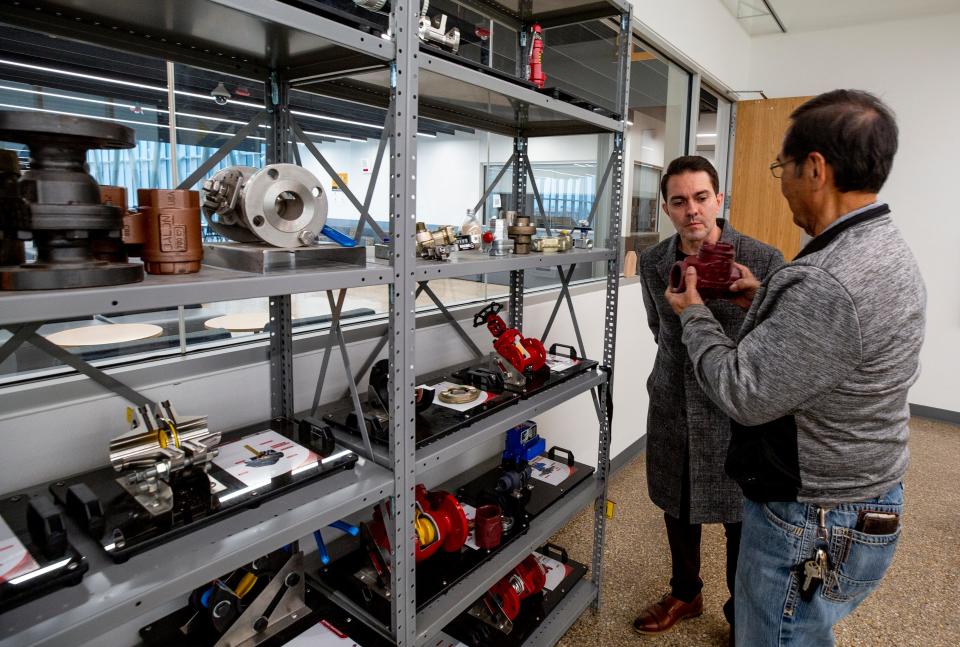
Getting all that oil and gas out of the ground requires many hands, said Jonathan Sena, a Republican Lea County commissioner who represents a district where the immigrant population has grown rapidly.
There is so much work in Lea County right now that anyone who wants a job could "get enough work for 24 hours a day for the next year," he said.
Nationwide, as the oil and gas workforce has grown, the percentage of foreign-born workers in the industry has nearly tripled. More than 14% of nearly 600,000 workers in “mining, quarrying and oil and gas” in 2023 were foreign-born, according to the Bureau of Labor Statistics, compared with 5% of roughly 520,000 workers in 2003.
Sena calls himself a "very conservative Republican" and supports Trump. But in a dog-eat-dog presidential campaign year, he has been struggling with his candidate's rhetoric.
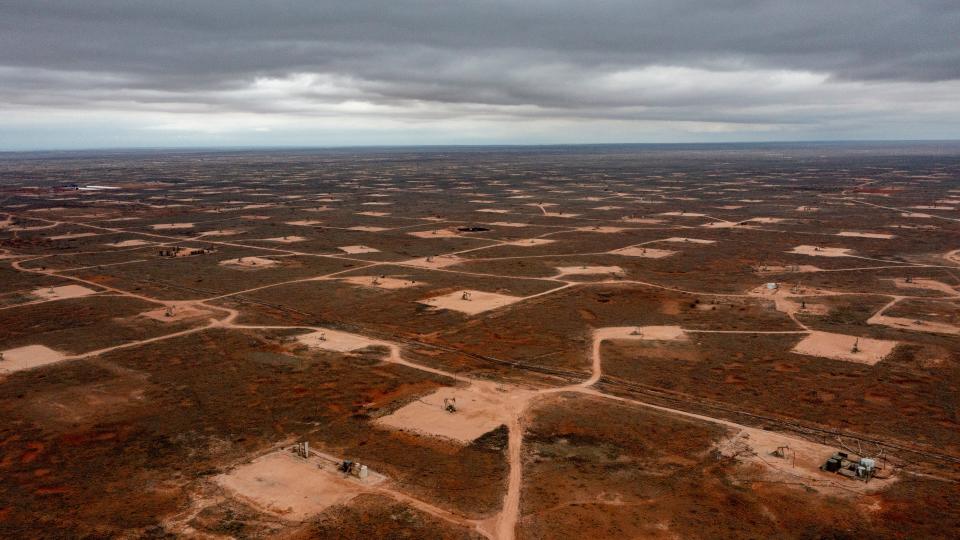
He knows immigrant workers, including people here illegally, prop up the industry that is the lifeblood of his community. He also knows them personally, as constituents, members of his evangelical church and neighbors.
Where Trump often describes migrants as "criminals," Sena said he knows "phenomenal workers."
"We see good people and people who are helping the economy do well," he said. "We don’t have enough workers in our community."
A boom-bust cycle in the oil industry

In Lea County's largest city – Hobbs, population 40,508 – today's oil boom looks like restaurants filled three times a day with tables of men in work boots, a Starbucks open seven days a week at 5 a.m., big-city traffic, and 23 hotels in a town too small for a Target.
But everyone in the county dreads the busts, which – when they hit – hit hard.
Restaurants and hotels close or scrape by. Equipment lots fill up with rows of parked oilfield machinery. Workers with citizenship or legal residency wait on unemployment for the global price of oil to climb again. With no access to government benefits, immigrants working illegally sit tight and do what they have to to survive.
Now, with the industry going strong, “if there was a mass deportation, it would be profoundly disruptive across the oil patch,” said Gabe Collins, energy analyst at Rice University’s Baker Institute in Houston.
It's not just Lea County or the Permian Basin, he said.
A mass deportation could provoke a "systemic disruption" that could ripple across industries and borders.
"Think of all the folks who work here and who are wiring money each week to Mexico," Collins said. "Imagine what happens when those flows are cut off. Not only do you have the immediate disruption, but you are actually setting the stage for a larger humanitarian crisis in our hemisphere which will rebound back to the border."
Learn more: Baltimore bridge collapse: Body of third worker, Honduran father, found by divers
It's the lack of economic opportunity that often pushes migrants to leave their home countries, while a strong job market in the U.S. creates an undeniable pull to come here, he said.
Hobbs residents know how a workforce shortage can hold back oil and gas development.
In 2018, voters approved a $30 million bond to, in part, help fund a new technical program at Hobbs High, the largest high school in New Mexico. Now, the school's more than 3,000 students – many of them the children of immigrants or immigrants themselves – can train to work in the oil and gas industry. The program is open to all students, without regard for their immigration status.
Business organizations including the Hobbs Chamber of Commerce and the Hispano Chamber of Commerce and the nonprofit Permian Strategic Partnership, all declined to respond to questions about immigrants in the workforce.
Sena is optimistic. If Trump wins a second term, he said, the new administration "is going to have to understand" the reality of a place like Lea County and "the blessings of a healthy, diverse community."
"They’re not going to deport 15 million people," Sena said. "I don’t think they can do that. It's just not practical."
The path to U.S. energy independence

It has long been a goal of Republican and Democratic administrations alike to rely more on homegrown energy than energy produced elsewhere.
Under Trump, in 2019, the U.S. reached its goal of producing as much energy as it consumed for the first time since the 1950s. "Energy" includes both fossil fuels and renewables, such as solar and wind.
That an oil and gas boom has continued under the Biden administration, despite tougher environmental regulations, is beside the point for Lea County voters. In a place where pumpjacks bob near backyards and gas wells flare on nearly every road into town, the boom could always be bigger.
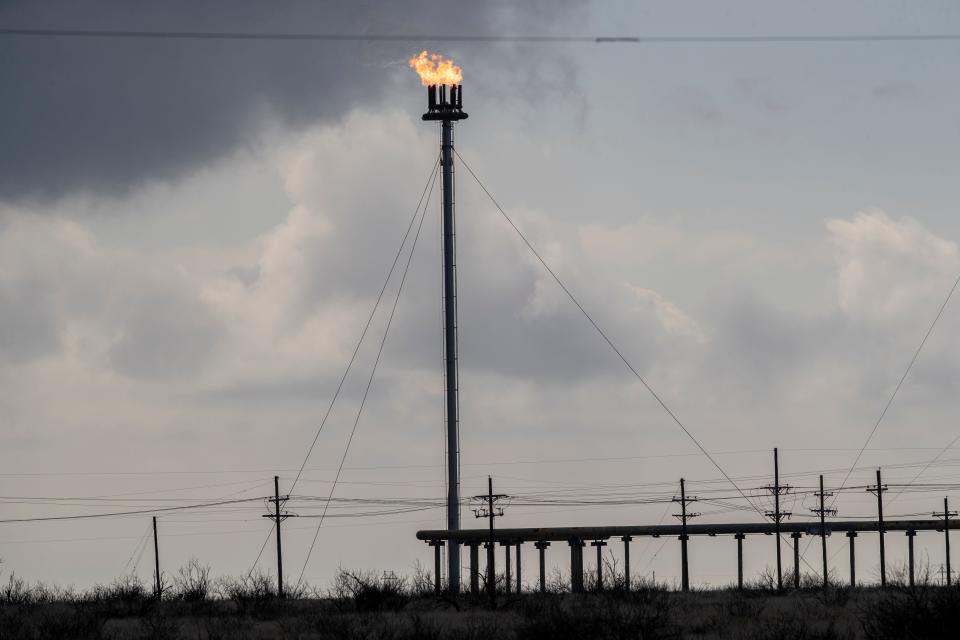
The region has been “amazingly productive,” said Jesse Thompson, a Houston-based senior business economist for the Federal Reserve Bank of Dallas.
“The Permian Basin has been the driver for oil and gas production (in the U.S.) for the last several years,” Thompson said. “Fracking in the Permian is the reason we’re producing so much oil and gas today.”
Drilling activity has more to do with oil prices than with whoever sits in the White House, Thompson said. The price of a barrel of oil is driven by forces typically beyond a president's control – everything from driving demand during summer vacation season to geopolitical risks like wars and natural disasters.
Though immigrants have laid the groundwork for today's production boom, there's a ceiling to what they can do.
Unauthorized workers say they generally can’t get the higher-skilled jobs that require background checks or advanced certifications.
Nor can they work for businesses that use the federal E-Verify system, which can tell an employer in seconds whether a person is authorized to work in the U.S.
Brian Owsley, an associate professor of law at the University of North Texas Dallas, has studied the illegal employment of unauthorized workers. The former federal magistrate judge – who used to sentence unlawful border crossers – said he sees a failed system that relies on deportations and razor wire rather than recognizing the magnet created by a strong job market.
“Until the people who are doing the hiring – the people reaping lots of benefits using undocumented labor – face serious consequences, they have no incentive to change,” he said. "I think the law has to be more onerous for employers."
Why can't immigrant workers get a visa?

The federal government issues visas for seasonal farmworkers and highly skilled workers like doctors and software developers – but not for low-skill, year-round jobs like those that underpin the oil industry.
Neither Trump nor President Joe Biden has proposed expanding work visas for oil and gas.
“These jobs are walled off from the legal immigration system,” said David Bier, director of immigration studies at the libertarian CATO Institute. “The vast majority of these jobs are year-round positions not requiring a college degree, and there is no work visa for that.”
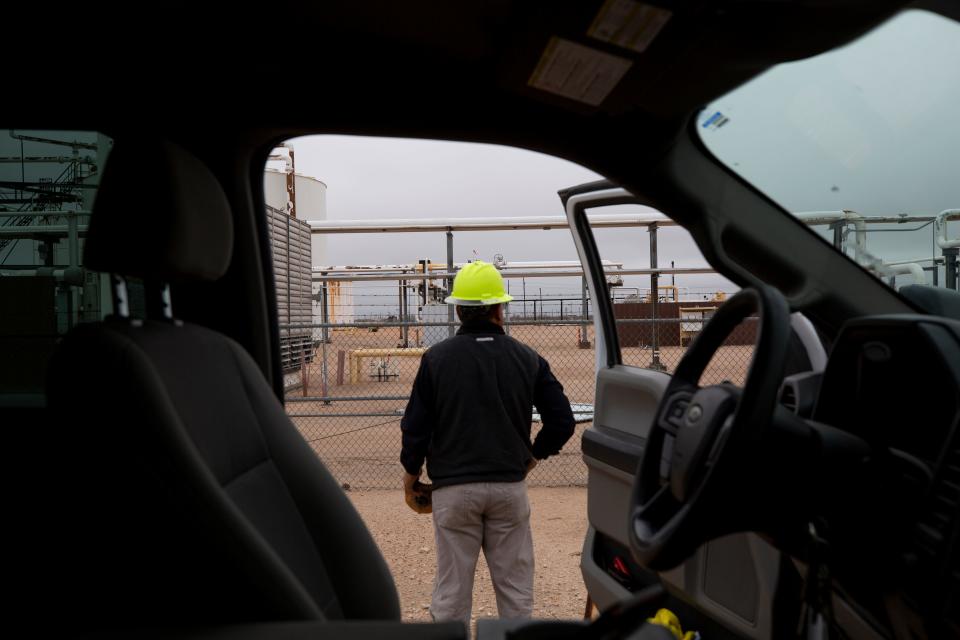
In the Permian Basin, the going rate for fake work papers is $250, according to two workers who showed USA TODAY text messages with the offers.
Federal investigators back that up. The availability of high-quality printers has made it easier to produce credible false documents, including fake green cards, employment authorization documents and Social Security numbers, according to Homeland Security Investigations spokeswoman Leticia Zamarripa.
HSI has arrested more than 600 people in the past five years in New Mexico and West Texas for “possessing fraudulent identity documents,” she said, adding that “these types of crimes can be perpetrated by both ‘lone-wolf’ and more sophisticated and organized transnational criminal organizations."
A worker in Lea County, who asked not to be identified, said he is surrounded by others like him working labor-intensive jobs without legal permission. He crossed the U.S.-Mexico border with a tourist visa more than a decade ago and never looked back.
“In the hardest jobs, it seems 90% or 99% of the workers are immigrants,” the worker said. “I don’t know anyone who has a visa for ‘el petroleo.’ In the dairies, yes. For oil, no.”
Six-figure salaries in a 'dangerous' industry

Pay in the oil patch is legendary, but so are the hardships.
It's said that a high school graduate can make six figures. But the health risks of working long hours with heavy machinery, the potential exposure to volatile gases in sometimes unpredictable environments, are serious. So is the personal toll.
Crews sometimes are weeks on the road. The work can strain families and end marriages.
“They say they earn big, but no, it’s the overtime,” said Maria Romano, who directs the Lea County office of Somos Un Pueblo Unido, an immigrant advocacy organization in New Mexico. “They leave at 3 or 4 o’clock in the morning and get home at 10 p.m. to get a good check.”
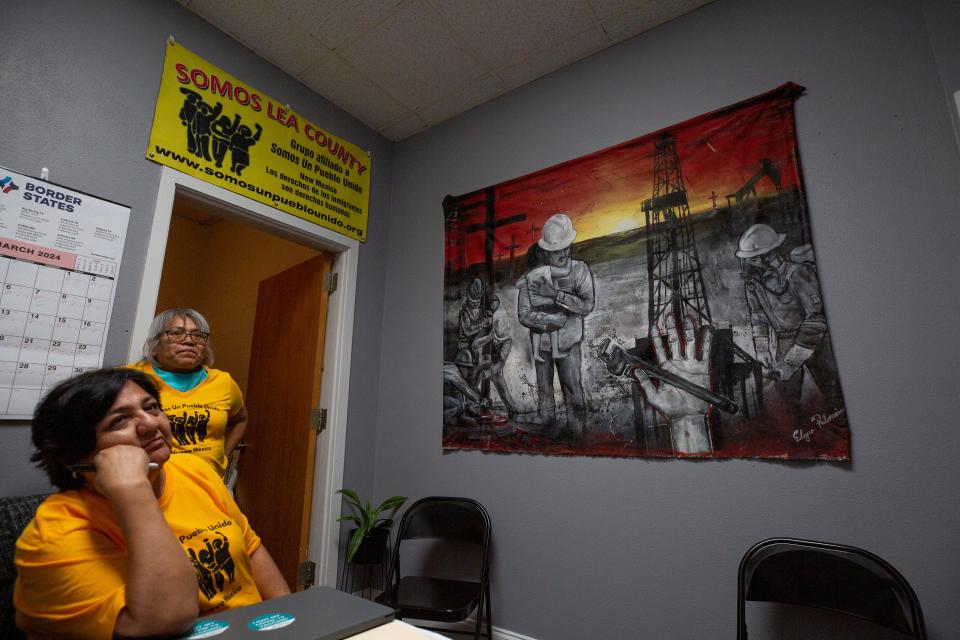
Romano’s own marriage to an oilman – who worked illegally in Lea County – ended years ago, and she remembers how her daughter’s friends confessed they thought she was a widow. “My own daughter once asked if her father lived with us, because she never saw him – never, never, never.”
Last year, New Mexico oil worker José Rodriguez stood near the steps of the U.S. Capitol and described the work he and other unauthorized immigrants do for the industry.
"I work for a construction firm that prepares the land where they install the platforms they use to drill for oil," he said during a political rally for immigration reform held by Vasquez, the congressman, and Somos Un Pueblo Unido.
"I work in a dangerous industry," he said. "The climate is always against us. We work long hours with heavy machinery. Getting sick isn't an option for someone like me, who doesn't qualify for health insurance ... We keep the economy running and we deserve provisional legal status."
Nationwide, 83 workers in oil and gas extraction industries died from occupational injuries and accidents in 2022, according to the latest data from the Bureau of Labor Statistics. Fatalities have risen each of the previous three years.
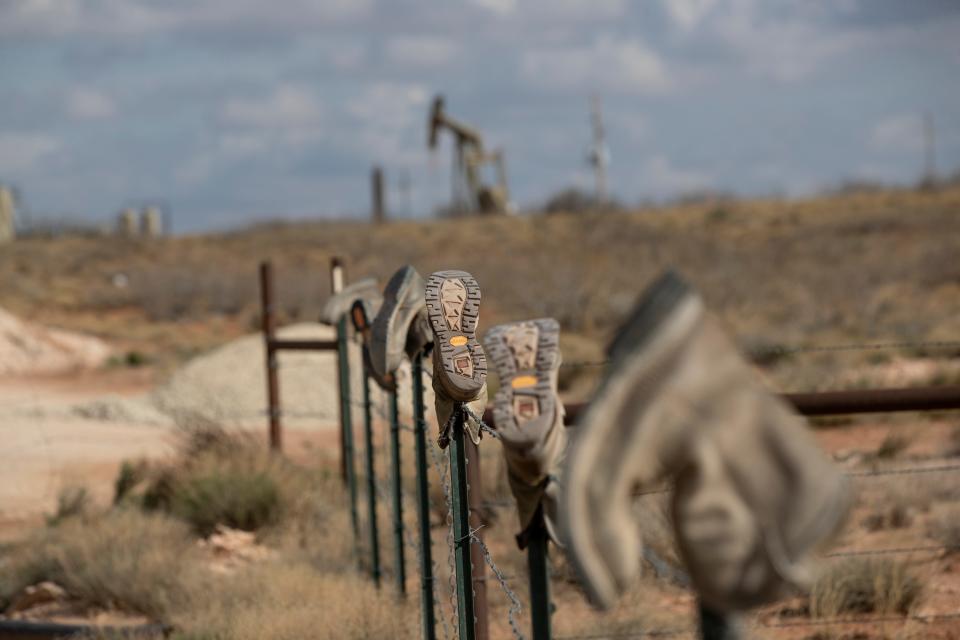
In a joint study of oilfield workers and their family members, University of New Mexico researchers and Somos found the majority of respondents hoped their own children wouldn’t work in the industry.
The overwhelming answer was "‘No.’ The work is so hard," Romano said. "The men get old fast.”
Looking toward the future

As voters look toward November, expectations for immigration reform from either party remain low.
A bipartisan border security bill – negotiated by three senators, including a Republican, a Democrat and an independent – failed earlier this year after Trump bashed the proposal. With no legislative solution, immigration remains a flashpoint in the presidential campaign.
Meanwhile, a huge gap remains in the U.S. economy between open jobs and workers to hire.
Even if every unemployed American took one of the 8.8 million jobs the Labor Department lists as available now in any industry nationwide, more than 2 million positions would still be left unfilled.
That's why Bier, the CATO analyst, said any immigration plan going forward ought to respond to U.S. labor needs.
“A campaign to scare off immigrants at this moment is not going to do anything to increase drilling in the United States,” he said. “It’s going to have the opposite effect.”
On a recent Saturday, Carlos Díaz steered a Ford F250 around the back roads of Lea County, tracing the constellations of oil and gas wellheads under a sky heavy with clouds.
“Some of us are worried about immigration,” he said, thinking about a second Trump presidency.
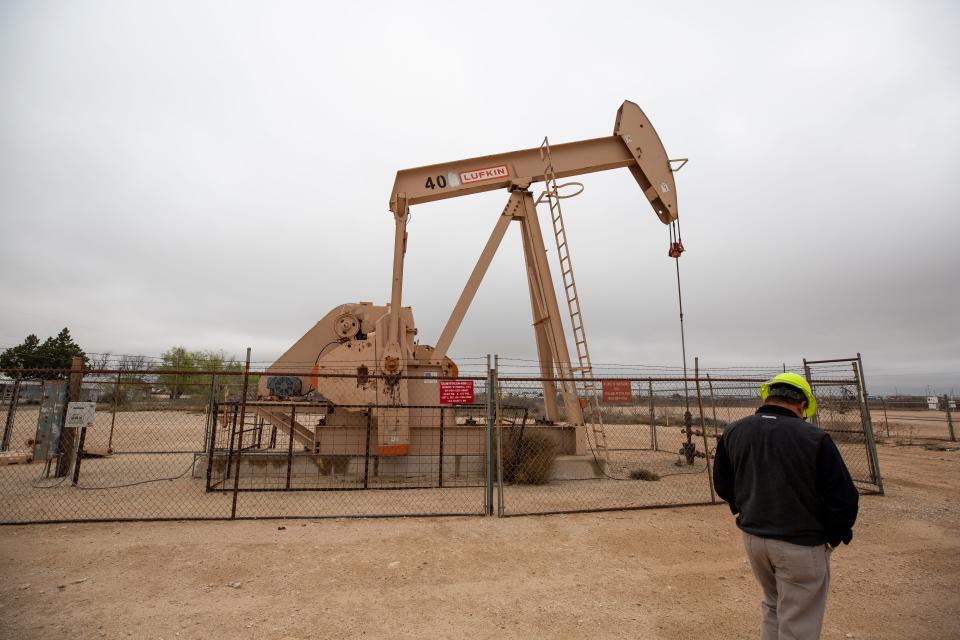
He recalled the first time he got deported during the Trump administration, when he was arrested for driving with a suspended license and was picked up by immigration agents. But he shrugged off the risk. He had made it back so many times before.
One of these days, he said, he'll go home for good.
He daydreams about retiring in Mexico.
“I want to go back to Mexico to live the rest of my life, to live my old age,” he said. “But while I can still work, while I’m still strong enough, I’m going to keep working here.”
Lauren Villagran can be reached at [email protected].
This article originally appeared on USA TODAY: Trump's promises to drill for oil and kick out migrants are at odds
